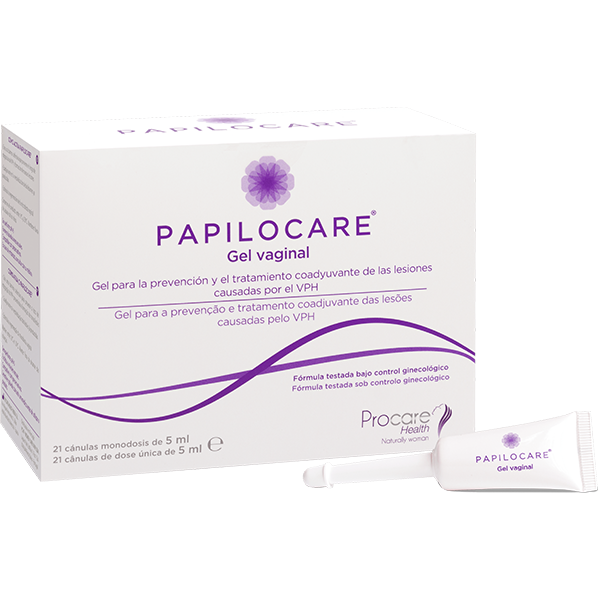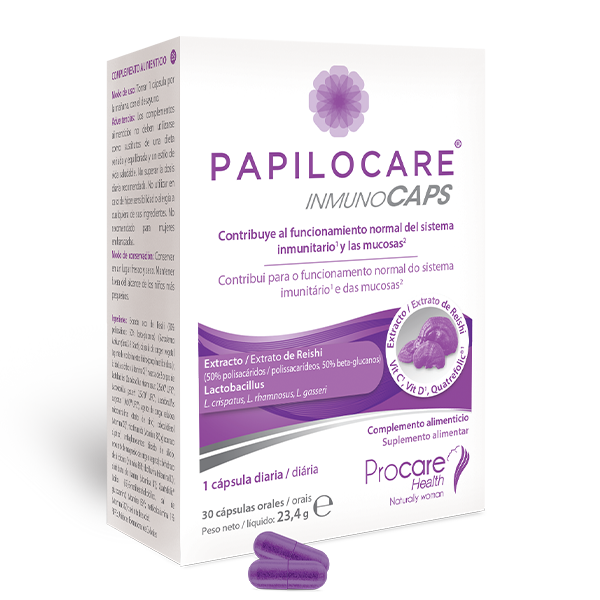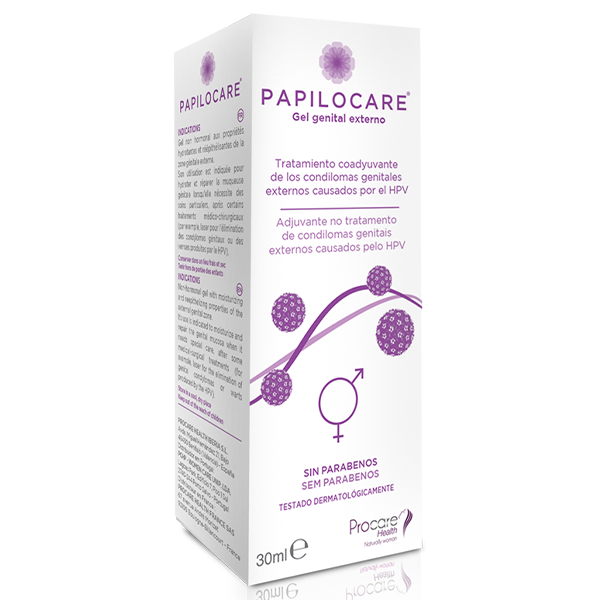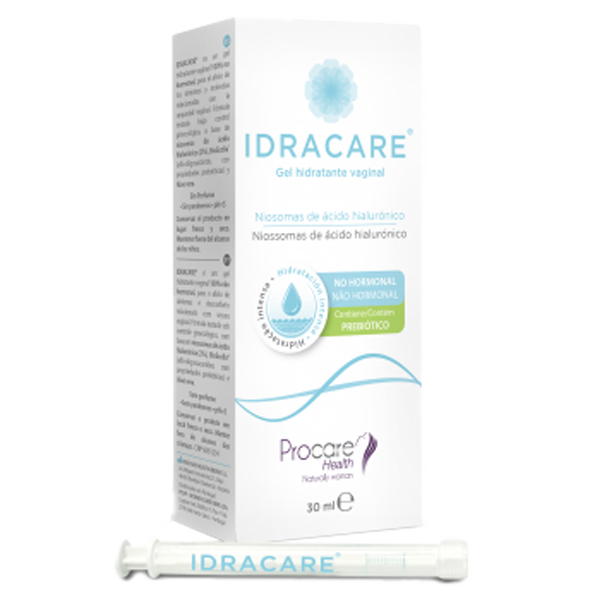Vaginal dryness: causes, symptoms and treatment

Many women experience vaginal dryness, especially after the menopause. But you don’t have to live with it. In this article we look at the common causes of vaginal dryness, treatments that can give you relief from vaginal dryness and restore vaginal health, and provide some reliable sources to find out more.
I suffer from vaginal dryness and sometimes pain. What is causing it?
Vaginal dryness is very common and can happen at all ages, but particularly after the menopause. It can cause discomfort or pain in your daily life, when exercising or during sex.
The lining of the vagina is normally kept moist, thick and elastic with fluid produced by your body. Sometimes these tissues can become thinner and dry, leading to pain, especially during sexual intercourse, but you may even feel discomfort when sitting or peeing.
The most common cause is the decrease in the hormone oestrogen. Oestrogen keeps the vagina moist and healthy and when it declines around menopause it causes the vaginal tissues to become thin and dry. More than half of women experience vaginal dryness during and after menopause.
But there are many other causes, including breastfeeding, diabetes, smoking, cancer treatment and removal of the ovaries.
What are the symptoms of vaginal dryness?
Vaginal dryness may interfere with your daily activities, and can affect your relationship and your sex life. Common symptoms are:
- Itching or a burning feeling
- Discomfort when exercising or sitting
- Pain and discomfort during sex, and sometimes bleeding after sex if the thin walls of the vagina are broken
- Urinary tract infections because thinning of the urethra and vaginal tissues make it easier for bacteria to cause infections.
Do I have to put up with it?
No, you don’t have to live with it. Many women experiencing vaginal dryness are embarrassed to talk about it or don’t know how to seek help. But there are many treatments to choose from that are both safe and effective. These can restore the moisture and health of your vaginal tissues, improving your daily life and sexual relationship.
What can I do?
Speak to your doctor if vaginal dryness interferes with your daily activities or is affecting your relationship. Your GP can check if the vaginal tissue is thin and dry due to decreased oestrogen, known as vaginal atrophy. Your doctor may also suggest a blood test to check your hormone levels and see if there are any other medical issues that could be causing the vaginal dryness.
Your doctor may suggest hormone treatment to boost your oestrogen levels. This can be HRT (hormone replacement therapy) in the form of tablets, patches or gels. Some people are prescribed a medicine called SERM (selective oestrogen receptor modulator), which increases your body’s sensitivity to oestrogen.
Another treatment your doctor can prescribe is topical vaginal oestrogen. This is a low-dose hormone treatment that delivers oestrogen topically, or locally, to the vagina in the form of a cream, pessary, gel or a hormone-infused ring.
If you want to avoid taking medicines, or hormones, there are still plenty of other remedies for vaginal dryness. We set these out in the following sections.
I want to avoid medication: what are my options?
If you prefer to avoid medication, there are broadly two types of non-hormonal products you can consider:
1. Moisturisers
Vaginal moisturisers can help relieve symptoms like dryness and the discomfort it causes by hydrating the vaginal tissues. They treat the symptoms of vaginal dryness but not the underlying cause.
- Replens MD: Forms a protective layer over the vaginal tissue, reducing moisture loss. This allows the product’s water content to remain with the tissue for up to three days.
- Vagisan: A cream-based product that combines fat and water to soothe dryness in the vaginal tissues.
- Vagisil ProHydrate: A water-based moisturiser enriched with hyaluronic acid. (Note: This is different from Vagisil Medicated Cream.)
2. Moisturisers that can repair tissues
If you’re seeking a product that not only moisturises but also supports tissue healing, there are several options made with natural ingredients designed to help restore vaginal health. These products aim to improve the tissue’s ability to retain moisture naturally while also offering temporary relief from pain.
- Idracare: Contains natural hyaluronic acid to improve tissue suppleness, aloe vera to soothe burning sensations, and nutrients that support beneficial vaginal bacteria and rebalance the pH level of the vagina (an acidic pH level helps protect the vagina by preventing yeast and bacteria multiplying too quickly). It uses a nano-capsule delivery system (called niosome) to transport the active ingredients deeper into the vaginal tissue.
- Palomacare: Made by the same manufacturer as Idracare, Palomacare builds on the tissue repair concept. In addition to the ingredients in Idracare, it includes Centella asiatica, a herb known for its tissue-healing properties, and beta-glucan, which offers anti-inflammatory and antioxidant benefits.
- Yes: A water-based product that includes aloe vera for soothing effects. It also contains flaxseed extract, though its effectiveness for vaginal dryness is still under research.
Other options:
- Lubricants: Products like K-Y Jelly can be used to supplement moisturisers during activities that may cause discomfort such as sex or cycling. These do not have a therapeutic effect on vaginal tissues and are intended for temporary use.
- Topical anaesthetics: Creams such as Vagisil Medicated Cream contain local anaesthetics to numb the area and provide short-term pain relief. These are symptom-relieving rather than healing solutions.
In summary:
You can choose between a basic moisturiser (e.g., Replens, Vagisan, Vagisil ProHydrate) or a moisturiser with tissue repair properties (e.g., Idracare, Palomacare, Yes). Depending on your needs, you may also top up moisturisers with a lubricant or a topical anaesthetic for occasional support.
More about Idracare
Idracare® is a vaginal gel formulated with natural ingredients to help restore and maintain vaginal health. It contains a high concentration of hyaluronic acid for deep hydration and uses innovative niosome technology to deliver moisture to the deeper layers of tissue.
Idracare®:
- Hydrates vaginal tissues and restores elasticity to the mucosa
- Repairs and maintains the surface tissues of the vagina
- Supports the natural balance of healthy vaginal bacteria (the microbiota), helping to prevent infections such as candidiasis (thrush) and bacterial vaginosis (BV)
- Improves and maintains a protective pH level in the vagina
- Is 100% hormone-free, paraben-free, and can be used with condoms.
Idracare® helps relieve vaginal dryness caused by:
- Hormonal changes related to the menstrual cycle, pregnancy, postpartum, breastfeeding, and peri- or post-menopause
- Hormonal contraceptives (e.g. the pill)
- Intense physical activity
- Smoking
- Stress
- Chemotherapy or radiotherapy
- Antibiotic use, which can disrupt the vaginal microbiota—a natural protective barrier.
How Idracare® works to combat dryness:
- Bioecolia nourishes beneficial vaginal bacteria, helping to rebalance the microbiota and reduce the risk of infection
- Aloe vera hydrates and supports tissue repair
- Hyaluronic acid provides deep hydration and improves elasticity of the vulvo-vaginal mucosa.
Idracare® has been clinically tested in the Idra Study, which evaluated the safety and effectiveness of the gel. Perimenopausal and postmenopausal women applied a single-dose cannula of Idracare® twice weekly for 12 weeks. Among the 127 participants:
- 80% reported reduced vaginal dryness and improved elasticity and moisture
- 80% improved or maintained the pH level of the vagina
- 87% experienced relief from discomfort or pain during intercourse.
Read more about the study.
Directions for use:
Apply one dose twice a week. Continue use as needed.
Find out more and buy Idracare.
Find out more about Palomacare, which is based on the same formula as Idracare but contains additional ingredients for stronger tissue repair.
Want to know more?
Learn more about vaginal health
Here are some useful and trusted sources of information:
Women’s Health Concern (Patient supporting group of the British Menopause Society, the main medical society for UK gynaecologists specialised in menopause)
Social
Sign up to receive our newsletter and a welcome discount code:
Disclaimer: Information on this website is provided for informational purposes only and not intended as a substitute for the advice provided by your physician or other healthcare professional. You should not use the information on this website for diagnosing or treating a health problem or disease, or prescribing any medication or other treatment. For medical advice, diagnosis and prescription, please consult a healthcare professional. More Information >
Disclaimer: Information on this website is provided for informational purposes only and not intended as a substitute for the advice provided by your physician or other healthcare professional. You should not use the information on this website for diagnosing or treating a health problem or disease, or prescribing any medication or other treatment. For medical advice, diagnosis and prescription, please consult a healthcare professional.
© LivBio Limited 2024 All Rights Reserved.











